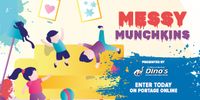A display at the National Indigenous Residential School Museum depicting mud shoes has been largely enhanced recently. Executive Lorraine Daniels explains there was a sample of mud shoes to remember the missing children from residential schools across the country.
An artist recently contributed many more from four schools to join the display at the museum with entire section of the museum dedicated to it.
“That came about two years ago. This was through Geneviève Levasseur. We started talking two years ago about how we were going to have them displayed at the Francophone Cultural Centre in Winnipeg, but that didn't work out. So, I invited her to come out last year at the annual Truth and Reconciliation Day to display the shoes that she has,” says Daniels.
She notes Levasseur visited different residence schools and they will be visiting more to collect the mud from the grounds. The mud was sculpted into small moccasins that the children wore at home, and then baked to be presented. They were not painted or coloured.
“This is to honour the residential school survivors who have gone to the various residential schools. The beautiful display was made during the Truth and Reconciliation Day last September. She gave away, probably, about half of the shoes to survivors. We took the rest and they're on display now.”
Daniels explains the mud taken from various residential schools have varying orange shades to them, which is noticeable. Mud from Portage is a different colour than mud from St. Boniface, with a completely different texture. They’re all very unique and hand made.
“She is passionate about the work that she does,” adds Daniels. “She's a just a beautiful artist and just a beautiful person all around, and we will continue working with her.”
The schools from which she obtained the mud include Portage la Prairie, Assiniboine in Winnipeg, Birdle, and St. Boniface.
“Hopefully, this year, we will go to Brandon and Sandy Bay, and maybe we'll look at some other areas, as well.”
One part of the display shows one made of raw mud to indicate what the mud looked like before it was is baked, and it’s quite brown. The baked mud ironically becomes shades of orange, the same colour chosen to depict missing residential school children.
“They get fired and they all turn the different colours of orange. You can see the actual beginning of her work. It’s very intricate and just very detailed. All of these are from these four locations.”
She says Levasseur calls them “healing shoes.” Daniels adds she made 152 of them; the number representing every year since the Treaties began – since 1871.
“It has a lot of meaning and she's put a lot of thought into the work that she's done.”
Daniels notes visitors have been very impressed with the display.
“I've donated a few of the displays to a few of the organizations. Southern Chiefs' Organization has a set. We will probably donate a few more down the road.”
Daniels adds Levasseur also collected maple leaves which are somewhat orange and red and placed them around the shoes.
“September was the month when we went into residential school. So, the orange, colourful leaves that you see represent the month that we entered residential school. For some, it's a sad time because we left our families to go spend a year in residential school. A lot of us just never went home till summer holidays. So, they were there for a whole year. It means different things to different survivors.”
Levasseur collected the leaves and they’ve stood the test of time and are quite delicate.
“We're hoping to maybe spray them somehow, so that they'll be preserved.”
















